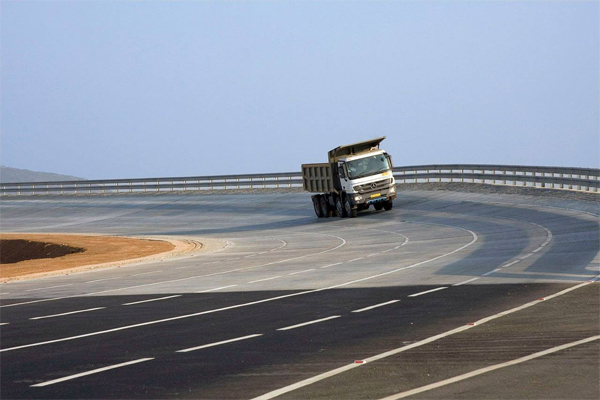Superelevation on the highway horizontal curve is one of the most important features in the construction of the highway roads. It is very essential to provide superelevation for the safe movement of vehicles on the curved portion of the roads. It helps the fast-moving vehicles to safely pass through the curved portion of the highway roads with stability. It is expressed as the ratio of the height of the outer edge with respect to the horizontal width.
The advantages of using superelevation in highway construction
- Counteracts the effect of centrifugal force acting on the moving vehicle
- Prevents the damaging effect on the surface of the roads due to improper distribution of load on the roads
- Help the fast-moving vehicles to pass through a curved path without overturning or skidding.
- Reduce the maintenance cost of the road on the curved portion.
- Ensure the smooth and safe movement of vehicles and passengers on the curved portion of the roads.
- Stability of fast moving vehicles is increased and their tendency to skid or overturn decreases.
- The distribution of pressure on both the wheels will be equal and thus wear and tear of vehicles decreases.
- Intensity of stress on the foundation decreases.
- No gullies or ditches are required on outer edges of the super elevated curve.
Different types of superelevation
- Maximum superelevation: In a highway, with mixed traffic, the value of superelevation so obtained from equations is to be limited to avoid the danger of overturning. This maximum allowable limit of superelevation is called maximum superelevation.
- Minimum superelevation: If the value of superelevation obtained from the equations is equal or less than the usual camber value provided to the road surface then it should be equal to the camber slope.
Methods of superelevation
To change the cambered section of the road into a super elevated one, two steps are taken.
- Firstly, the camber on the outer edge is eliminated gradually till the road pavement has one straight tilt or slope from the inner to the outer edge (Elimination of crown method).
- Secondly, this straight line slope gradually increases till the desired super elevation is attained. (Rotating pavement method).

Outer slope rotation method
In the first method, the outer slope of the road is slowly rotated around the crown by progressively decreasing its inclination or gradually raising the outer edge. This inclination of the outer slope tangential to the crown surface firstly reaches horizontal. Then it slowly increases till it has attained the same inward slope. The main disadvantage of this method is the difficulty of draining water in some portion of the road length where the slope on the outer edge is less (gradually decreased) than the camber provided on the road. This method is commonly used on Indian highways.
Diagonal crown method
In the diagonal crown method, the cambered section of the road is eliminated by progressively shifting the crown towards the outer edge along the extension of the inner slope.
Conclusion
Different advantages and methods to achieve superelevation are discussed above depending upon the topography and design analysis that need to be created

